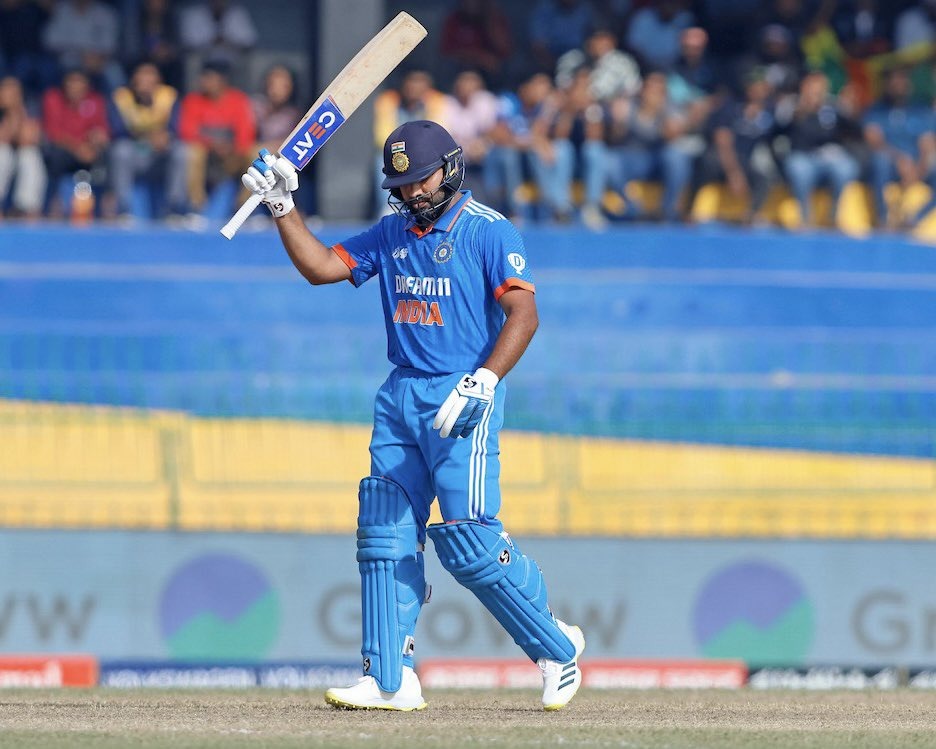
One thousand five hundred and sixty-five days. That was the difference between the India-New Zealand World Cup semi-final in 2019 and the game the two countries played in the 2023 World Cup. But just for a brief period, while watching the round-robin match in Dharamsala, it felt as if one was transported back to Old Trafford.
The protagonists were the same — Matt Henry, Trent Boult and Rohit Sharma. KL Rahul, Rohit’s opening partner from that last-four game, was batting lower down the order. Like 2019, there was nifty movement for the pace bowlers. Henry, in particular, would have realised that the conditions were right up his alley. Just that at the end of 10 overs, the narrative was different.
Four years ago, Henry had run rings around the Indian top-order with his tried and tested methods of scrambled seam and a wee bit of swing. In Dharamsala, the score read 63 for 0 after the first powerplay. Cricket being a game of glorious uncertainties is a cliché. But it can aptly be used for what transpired in Part 2 of the Henry-Rohit saga.
Largely one cricketer was responsible for the game taking a divergent path, and that was Rohit. The India captain was beaten quite a few times by Henry, but he was prepared to go for the jugular. In Henry’s opening over itself, one delivery moved off the seam and whistled past Rohit’s edge.
At this point in time, one wondered whether it would be a repeat of 2019. But there seems to be a clear messaging from Rohit and the rest of think-tank about playing with intent at the top. Rohit once more walked the talk as the very next ball from Henry was smacked wide of long-on. It was a shot of the highest class, as in seaming conditions, it is difficult to gauge the randomness associated with Henry’s wobble-seam deliveries. More importantly, it signalled to Henry that what took place at Old Trafford wouldn’t be a recurring theme.
The battle between the old foes continued. Henry relentlessly tested Rohit in the corridor of uncertainty with movement, but the latter’s magic was undimmed by his persistence. He shuffled across to a nip-backer and glanced one through fine-leg. If Rohit were a tad late on that shot, he would have been trudging back to the hut LBW. And just like that he creamed the bowler over long-off after dancing down the track. In other words, the risk was quite considerable. The reward, however, was bigger.
Trent Boult, Henry’s pace partner, wasn’t spared as Rohit tonked one over his head. A few thoughts gushed forth. How could he play such a stroke with so much clarity? Maybe we are being fooled into believing that an actual cricket match was going on. Instead, it was some video game. Finally, the moment of truth arrived. Pinch yourself, this is for real.
Gill, too, followed in his captain’s footsteps, playing a brisk hand. In the midst of all the fireworks on display, Henry must have been going through a gamut of emotions. He went past the bat around 10 times with no rewards. And he would then end up watching Rohit being dislodged by a rather modest delivery from Lockie Ferguson. Oh! Perhaps one more whisper about that good, old cliché of cricket. To Henry’s credit, he didn’t show much of his emotions in his body language.
Sometime after Rohit hangs up his boots, this knock of 46 might become a footnote amongst all his dazzling tons and doubles. But it deserves to be rated at par with those because he thwarted the threat of India’s bugbear from the 2019 World Cup. On a night full of mist/low hanging clouds, the knock flashed brightly for a while.




